BMW alone makes a diesel engine packing three turbochargers. We wondered why until we drove the new X5. Its taut, terrific and will now well-off outdoorsy types
It is not often that you look forward to a 500km round trip in an SUV, but when said machine is BMW’s tri-turbo diesel X5 M50d, we were genuinely excited. The concept was to journey to sunny Aotea Harbour via the majestic Kawhia road, but naturally the weather had other ideas. Wet and blowy heading there, but fortunately fine for the return, in which we took roads even less travelled – lots of gravel – and then a testing section of seal to finish off our big day out.
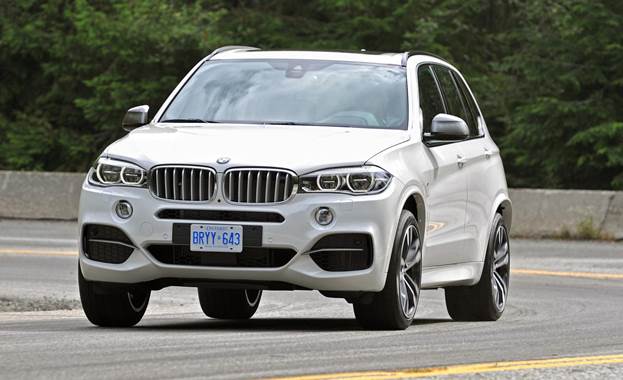
Despite weighing a herculean 2.4+ tonnes, the M50d was up to the task. We learnt that it almost doesn’t matter how heavy the beast is; it’s where that weight is distributed that’s more relevant. The X5 managed a mighty impression of the ultimate driving monster truck. With sophisticated suspension and generous PZero rubber, it grips like clingfilm, and the X5 carved up the coals roads like no vehicle this height and size has any right to. We must have seemed bemused, not quite able to believe what this super SUV was doing. Rounding out the day it produced a best 0-100 run only a second shy of an M5′s. At 5.32sec, the M50d is number two on our list of fastest diesels ever.
What is the M50d?
It’s the top diesel version of the just-released third-generation X5, sporting a tri-turbo 3.0-litre inline six-cylinder diesel. It is one of a growing group of superSUVs. At their head are V8 turbopetrol variants, like the X5M. BMW quotes a 4.7sec sprint time so for a diesel-powered variant to achieve 5.3sec is quite a feat.
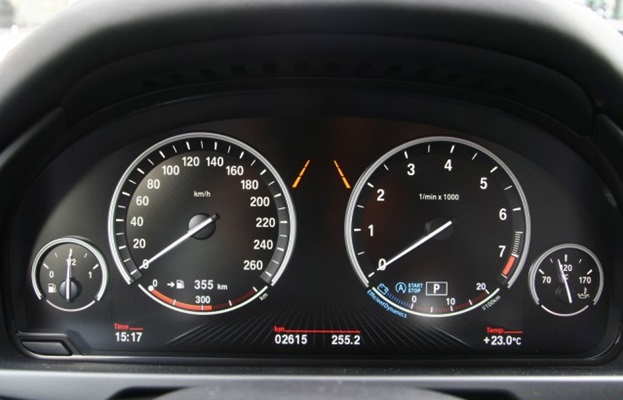
What superSUVs do best is deliver plenty of content for the money. If you’re of the big-is-good persuasion, these have appeal, representing better value than the more traditional luxury sedans and estates. The X5 you see here costs $174k; a similarly quick 750 costs over $230k. SuperSUVs come loaded with standard features. In the case of the X5 50d, you get spanking 20-inch alloys, the rears shod in 315/35R20 Pirelli PZeros, an electrically operated tailgate, self-parking, comfort access, head-up display, auto-acting high beam, a panoramic sunroof and heaters for the power-operated leather-clad sports seats. There’s also active cruise control, adaptive LED headlights, sonar and surround view, plus reversing camera, four different driving modes, four zones of air con, a Harman/Kardon surround sound system, and much more. There’s proper bang for buck here. An alarm comes gratis, pleasingly, as do Lane Departure, Sat Nav and Collision Warning, and there’s every conceivable aspect of connectivity, down to internet and TV, all relayed via a mammoth centre-mount screen. Home and away stuff.
What motivates her?
While it’s not new now, as the former X5 debuted this engine, it’s still the only tri-turbodiesel out there. Yes, folks, for those who think two turbochargers make you woefully inadequate, BMW has the answer with its trio of snails working in perfect three-part harmony. A small variable geometry turbocharger kicks in from low revs to limit lag (of which there’s little), a larger turbo assists from 1500rpm onwards, generating ‘consistently high torque’ and above 2500rpm a third small turbo assists, all three generating ‘impressive peak power’. And that total would be an impressive 280kW and a bristling 740Nm from 2000-3000rpm. When slotted under the hood of a 5 Series sedan, it propels the M50d xDrive to the legal open road limit in just 4.7sec. That’s smoking for a diesel, and would make it the first of its type to crucify the 0-100 5.0sec barrier. Pity we don’t get that model here.
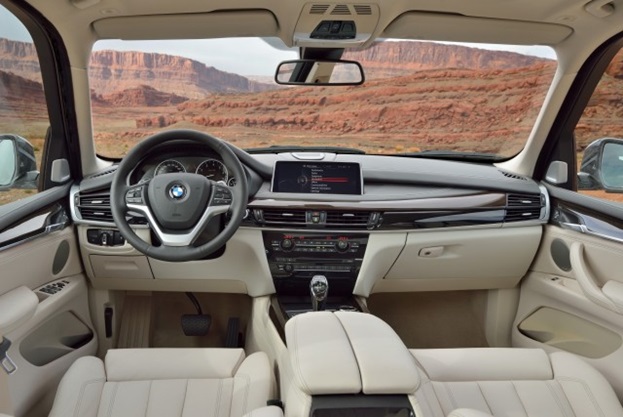
But BMW is quick to note that efficiency should not be overlooked, for this mobile apartment has a claimed overall combined fuel use figure of 6.7L/100km. That’s about the same as a Corolla’s. Ably assisting is idle-stop, and a range of driving modes that allows you to switch between comfort and sporty engine and suspension settings.
The gubbins
BMW has sold well over one million examples of the X5 in a bit over a decade, making it the sales leader in its sector. That might in part explain why the latest generation is just different enough in a visual sense to be distinguished from its popular forebear. More substance and width to the famous double-kidney grille, and the wider twin headlamp assemblies now butt right up to the edges of the grille. Gills gracing the rear of the front fender are new too.

There’s not a lot of extra real estate externally; its 32mm longer and 5mm wider. However, there are 30L of extra luggage space, at 650L with five seats in use, and this can be readily expanded to 1870L by rolling the rear seat backs down. They split 40:20:40 for added versatility. Third-row seats are an option.
X5 chassis changes render it slightly stiffer and a bit lighter, but really at over 2.4 tonnes this weighs as much as a similarly priced Range Rover. However, it is in a whole ‘nother universe for straight-line speed and cornering dynamics. Regarding the latter, the M50d gets a proper sports-oriented set-up, with Adaptive M suspension and Adaptive Suspension package “Dynamic”. Sounds complex but essentially it boils down to active roll control, active sports damping, and firmer rear air suspension, along with a mechanical sports differential for a proper torque vectoring system. There’s added rear drive bias too.
The trip back
The trip back from the wild and remote Aotea harbor was extremely entertaining. We trod the 23km or so of metal road, blasting along the first part like it was sealed, but slowing up for the final twisting section which had been recently graded and rained upon. With suspension in comfort mode you’re scarcely aware the surface below is metalled, and the ESC system electronics quell the slides. You just need to avoid off-camber drop offs.
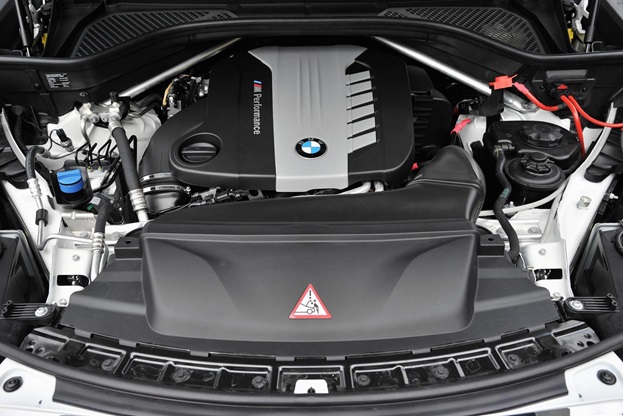
Back on the seal again and it’s hard to credit the roadholding of this machine. Despite the lump up front, there’s only 49 per cent of total weight over the leading axle. And with active antiroll bars, there’s virtually no body sway in evidence when cornering – check the images – meaning the XXXL-sized tyres can get a proper hold on the tarmac, stickiness enhanced by adaptive damping. This corners then with unlikely precision, holding midturn speeds you’d normally associate with a sports sedan. It corners best in the Sport+ setting when engine, transmission, steering and ESP maps are all optimised for the task. The steering cooperates well too, with good heft and surprising feel for an electric system.
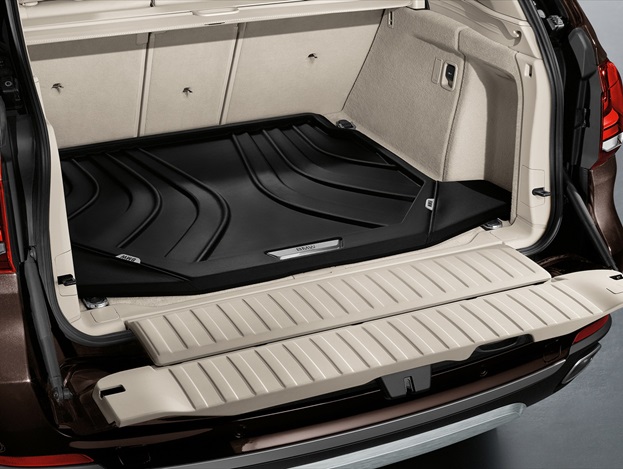
Extraordinary dynamics show just how far this sector has advanced in a decade. Sure, some mechanical and electronic complexity is needed to push the boundaries but it’s hard not to be impressed. We’re pretty sure the guy driving the wheels off a Polo GTI was when we overhauled him.
Highway Hauler Too
And on the speed thing, this can just as easily man-up to the task. Its best 80-120 time of 3.66sec makes it as quick overtaking as a WRX or a Commodore V8 SSV Redline. ZF’s eight-speed automatic transmission is outstanding, shifting with speed and precision. And to cap it all off, the engine has definite sporting exhaust overtones. It never failed to surprise and delight. If you so choose, you can shift by wheel-mounted paddles but we didn’t bother much, because the auto’s software is well sorted, and S mode raises transmission sensitivity. Economy is impressive, given the X5′s weight and power, managing 11L/100km around town and into single figures in rural running. At 100 it’s only doing 1500rpm in eighth, so small wonder. We saw a worst of 12.8L/100km. It’s quiet too, despite all that rubber underfoot, with a mean in-cabin dB figure of just 73dB. Not many quibbles with the M50d. We’d have liked a digital speed readout, and the indicators are stiff in operation.

If you like superSUVs and Range Rover isn’t quite up your alley, this dynamo for the same money likely will be.
Specs Price: $174,000 Engine: 2993cc, IL6/TDI/ longitudinal Power: 280kW @ 4000-4400rpm Torque: 740Nm @ 2000-3000rpm 0-100km/h: 5.32s Fuel capacity: 85L Weight: 2416kg |